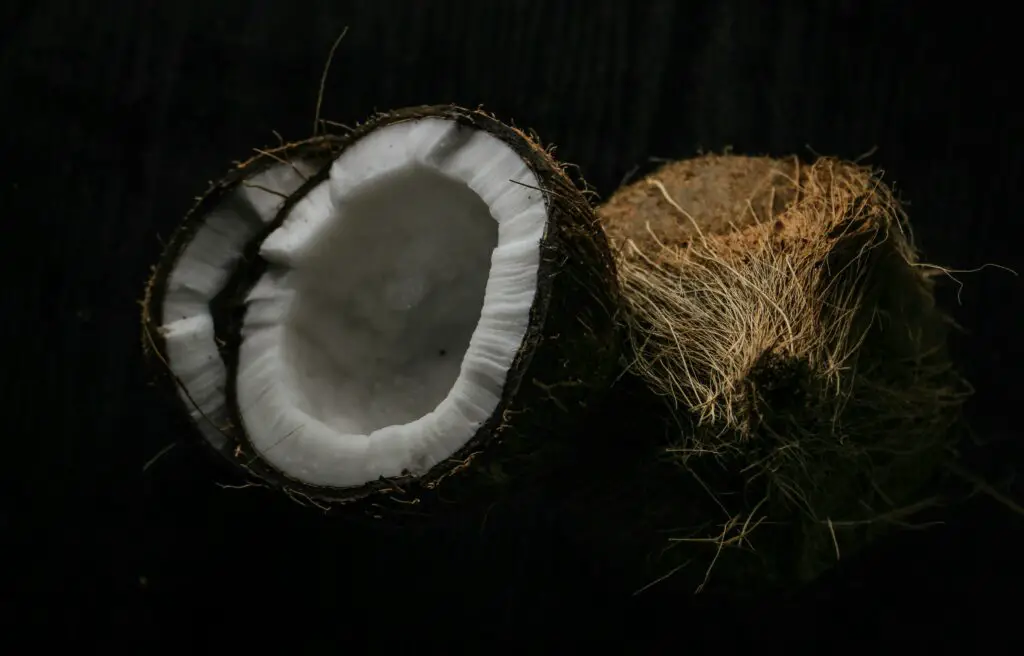The coconut, that marvelous fruit of the palm known scientifically as Cocos nucifera, has woven itself intricately into the tapestry of human culture and cuisine across the globe. Its uses are as diverse as the cultures that cherish it, ranging from the culinary delight of coconut water, milk, and flesh, to the utility of its husk and shell in crafting and agriculture. Yet, before one can delve into the myriad uses of this tropical bounty, one must first master the art of preparing it for consumption or use, beginning with the fundamental task of cleaning.

Cleaning a coconut involves several steps, each essential to ensuring that the coconut is ready for whatever use you have in mind. Here’s a straightforward guide:
- Start with the Outer Husk: If your coconut still has its outer green husk, you’ll need to remove this layer. This is most often done at the source, but if you find yourself with a fully husked coconut, use a sharp knife or a garden machete with care. Slice away the husk, taking care not to cut too deeply into the hard shell underneath.
- Drain the Coconut Water: Locate the three ‘eyes’ or pores at one end of the coconut. Using a clean screwdriver or a metal skewer, puncture through one of these eyes. Turn the coconut upside down over a glass or bowl and allow the coconut water to drain out completely. This water is not only refreshing to drink but is also packed with nutrients.
- Crack Open the Shell: Once the water is drained, you can proceed to open the coconut. This can be achieved by tapping the coconut’s equator with a hammer or the back of a heavy knife. Rotate the coconut, tapping around its circumference until it cracks open. Some prefer to bake the coconut in a preheated oven at 400°F for about 15 minutes before cracking it open, as heat helps to separate the flesh from the shell.
- Separate the Coconut Meat from the Shell: With the coconut cracked open, use a butter knife or a coconut tool to pry the coconut meat from the shell. Insert the knife between the meat and the shell, and work it around gently to loosen the meat. It might come out in pieces, and that’s perfectly fine.
- Rinse and Peel the Brown Skin: Once you have the coconut meat out, you’ll notice it’s covered in a thin, brown skin. While this skin is edible, some recipes may call for its removal for texture or aesthetic reasons. To peel it off, you can use a vegetable peeler or a sharp knife, then rinse the white coconut meat under cold running water to clean off any remaining shell bits or husk.
- Final Rinse and Dry: Give the cleaned coconut meat one final rinse under cold water, then pat it dry with paper towels or a clean cloth. Your coconut is now cleaned and ready to be grated, sliced, or processed further according to your recipe or project needs.
The coconut, in its husked, cracked, and cleaned form, reveals not just its inner treasure but also the versatility and richness it brings to the table. From the refreshing simplicity of the water hidden within its shell to the rich, creamy texture of its flesh, the coconut offers a bounty of flavors and uses that are as varied as the methods employed in its preparation.
Embarking on the journey of cleaning a coconut might seem daunting at first, with its hard shell and fibrous husk presenting a formidable barrier. Yet, this process is akin to uncovering a treasure trove, a fitting metaphor for the culinary and cultural explorations that the coconut enables. The act of cleaning a coconut is not just a preparatory step in the utilization of this tropical fruit but a ritual in its own right, inviting patience, skill, and a deeper appreciation for the natural world’s gifts.
In modern kitchens around the world, the coconut continues to be a source of fascination and culinary innovation. From the traditional to the contemporary, the ways in which the coconut can be transformed are limitless, making it a staple ingredient that crosses cultural and culinary boundaries. The process of cleaning a coconut, therefore, is not just a means to an end but a gateway to a world of flavors, textures, and possibilities waiting to be discovered.

